About us
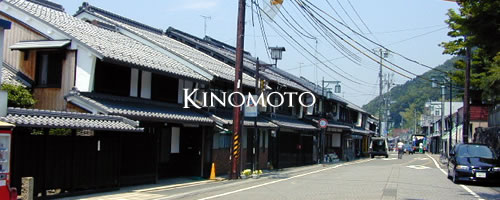
Traditional instruments are one of the representative arts of Japan.Koto’s (Japanese harp), Samisen’s (Japanese banjo), and Wadaiko’s (Japanese drum) are especially famous among them and there are various more traditional instruments in Japan.Marusan Hashimoto Inc. produces the substantial strings for the various string instruments in Japan.
Silken threads are commonly used as the string.Japan is one of the few countries around the world nowadays using silken threads in an instrumental use.The valuation of Japanese traditional instruments is elevating nowadays by virtue of the professional musicians performing abroad, but you may say that the beautiful and mellow afterglow can only be performed by the silken thread strings.
We are intending to outthrust the attractiveness of this silken thread strings worldwide.Silk goods produced by Marusan Hashimioto Inc., the top company of strings for Japanese traditional instruments, can be processed in the use of silk-rope strings, silk made laces and so on.We are looking forward for your interest to our company.
Products
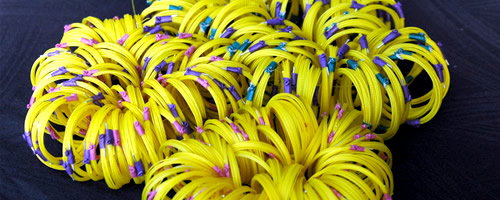
Japanese traditional instrument ‘Samisen’
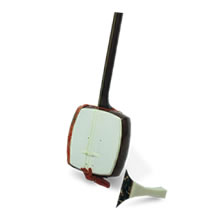 Samisen originated from the Gen period of China.It came to Okinawa in the 14th century and is said that it was imported to the mainland of Japan in the 16th century.3 strings compose a Samisen.There are three prominent type of Samisen which differ in there neck and body.The strings for Samisen’s Marusan Hashimoto Inc. manufacture counts up to about 200 types with various thicknesses.The three string used have different thicknesses to express the low and high notes.A large pick called bachi is used to strike the strings.The strings are mainly made of silk but there are some made of nylons or polyesters.
Samisen originated from the Gen period of China.It came to Okinawa in the 14th century and is said that it was imported to the mainland of Japan in the 16th century.3 strings compose a Samisen.There are three prominent type of Samisen which differ in there neck and body.The strings for Samisen’s Marusan Hashimoto Inc. manufacture counts up to about 200 types with various thicknesses.The three string used have different thicknesses to express the low and high notes.A large pick called bachi is used to strike the strings.The strings are mainly made of silk but there are some made of nylons or polyesters.
Japanese traditional instrument ‘Koto’
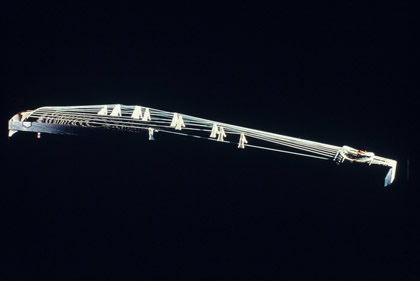
Koto originated from China and was imported to Japan in the 8th century.13 strings with the same thickness are used in a Samisen. It is tuned by the position of the movable bridge called the Kotoji.The sounds are made by plucking and hooking the strings with a fake fingernail worn on fingers.The Koto with 17 thick strings is called ‘Jyushichi-gen’ and is used as base in an ensemble.
The strong points
Countersunk raw silk made of the finest silk thread is used as the basic ingredient
The Ooto section at the base of the Shizugatake in Kinomoto City, Shiga prefecture is one of the few places in Japan producing domestic strings by a classical method called the countersunk. The clear and pure melt water of the Shizugatake is used in the production of the raw silk. Only the spring pods of the silkworm fed by new sprouts of mulberry are used for the strings of Japanese traditional instruments.
We produce about 350 products of strings for Japanese traditional instruments
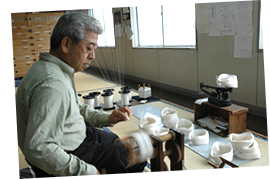 Marusan Hashimoto carries various strings for Japanese traditional instruments adding up to about 350 products with different thicknesses, instrumental types, ingredients, and quality ranks. Many of them are Samisen strings but there are some strings for the use of Koto's, Jyushichigen's, Biwa's, Kokyu's, Sansen's, Ooshima Samisen's, and Gagaku's. Samisens are used to perform various types of music like Nagauta, Jiuta, Tokiwatu, Minyo, Tugaru, and Gidayu (Bunraku). Each instrument has its best tone and the various usage of the instrument causes the strings to vary in many types. There are no goals to seek the finest tone quality matching the perfect intention, deepness, afterglow and so on.
Marusan Hashimoto carries various strings for Japanese traditional instruments adding up to about 350 products with different thicknesses, instrumental types, ingredients, and quality ranks. Many of them are Samisen strings but there are some strings for the use of Koto's, Jyushichigen's, Biwa's, Kokyu's, Sansen's, Ooshima Samisen's, and Gagaku's. Samisens are used to perform various types of music like Nagauta, Jiuta, Tokiwatu, Minyo, Tugaru, and Gidayu (Bunraku). Each instrument has its best tone and the various usage of the instrument causes the strings to vary in many types. There are no goals to seek the finest tone quality matching the perfect intention, deepness, afterglow and so on.
There are 12 processes in making strings from silken threads in which almost all process being handmade
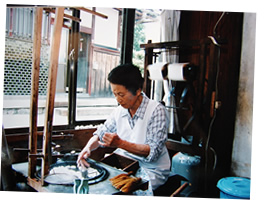 Silken threads are a very delicate material and it takes a lot of trouble treating it. Since so, the strings will answer with its beautiful tone in return of the time and effort poured to it. To take advantage of the silken threads characteristics, Marusan Hashimoto Inc. takes nearly 12 processes, 19 including smaller processes, in its production. Almost all of the procedures are still in the manual fashion.
Silken threads are a very delicate material and it takes a lot of trouble treating it. Since so, the strings will answer with its beautiful tone in return of the time and effort poured to it. To take advantage of the silken threads characteristics, Marusan Hashimoto Inc. takes nearly 12 processes, 19 including smaller processes, in its production. Almost all of the procedures are still in the manual fashion.
A traditional method called Komayori is used to twist the thin strings of the Samisen. Komayori is a technique where we twist the strings by rubbing the shaft of a Koma (a Japanese toy), with the string attached to it. It is said to take over 10 years to master this technique. Pro musicians adore using the instrument made from this technique and it is also introduced as a mastership throughout the media.
Marusan Hashimoto’s strings are used on products other than Japanese traditional instruments
Silken threads are used in Japanese bindings like Kimono's and Obi's or braided ropes but there are hardly any string ropes or silken laces manufactured by silk in Japan nowadays. We use a special technique to twist the thread in making the silken laces, which is a tool to sustain the Japanese traditional custom, art, and industry. Our silk has a characteristic of fine flexibility, luster, twisting, and easiness of tying. We manufacture a wide variety of product in small quantities. We are willing to respond flexibly to orders for various thickness, twisting, or colors.
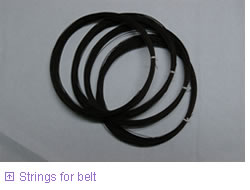
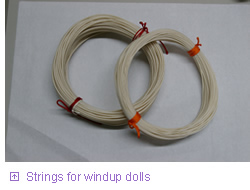
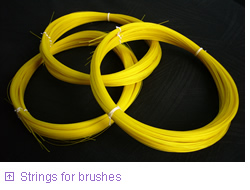
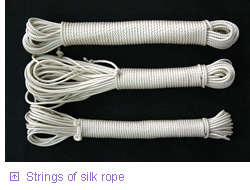
Location
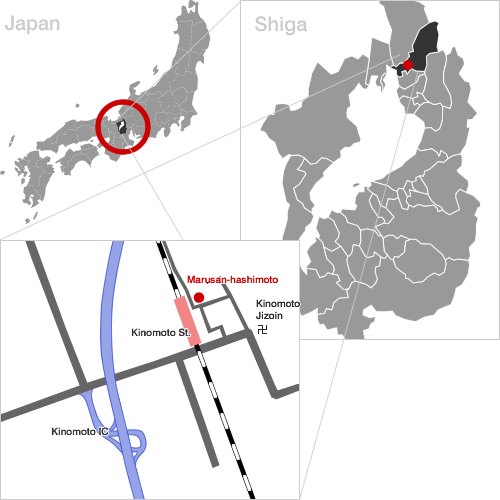
Contact
529-0425
1049 Kinomoto, Kinomoto-cho, Nagahama-shi, Shigaken
Phone 0749-82-2167
FAX 0749-82-2667
